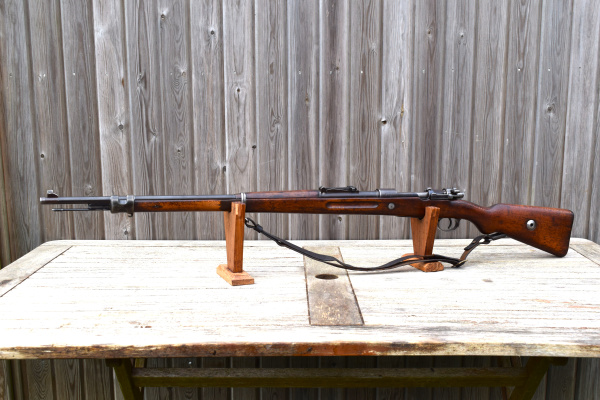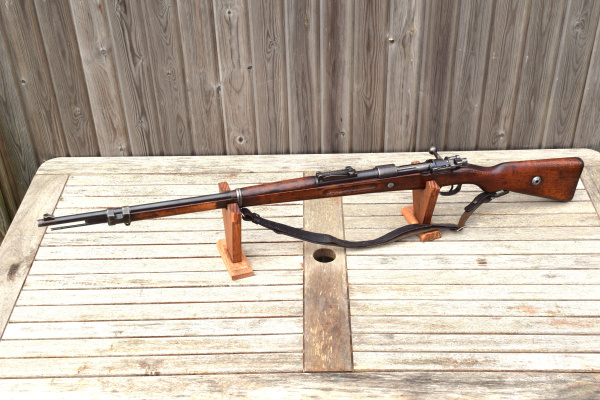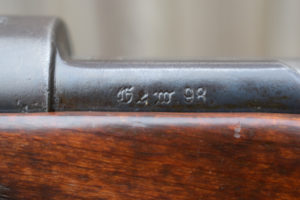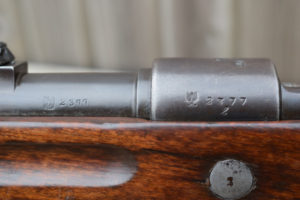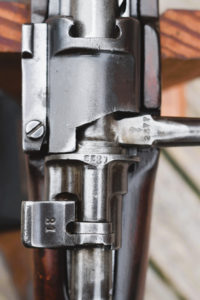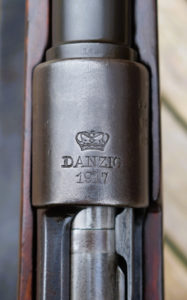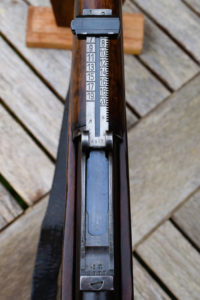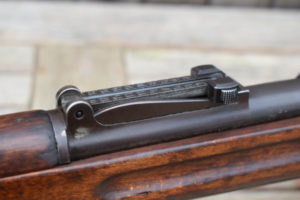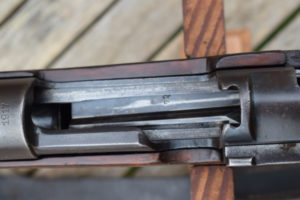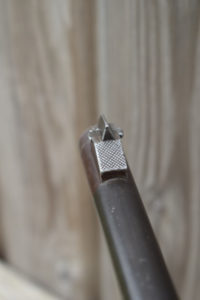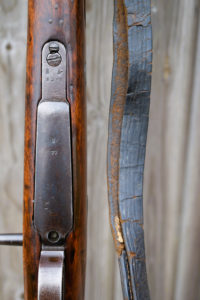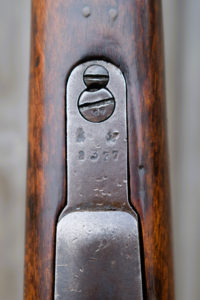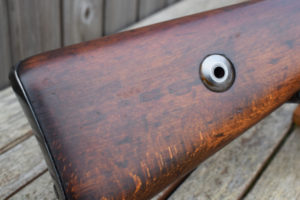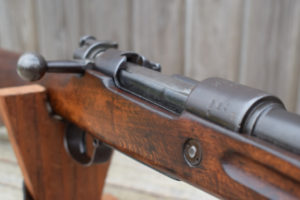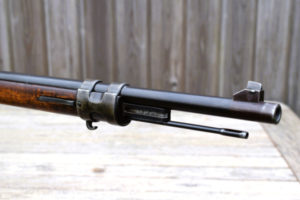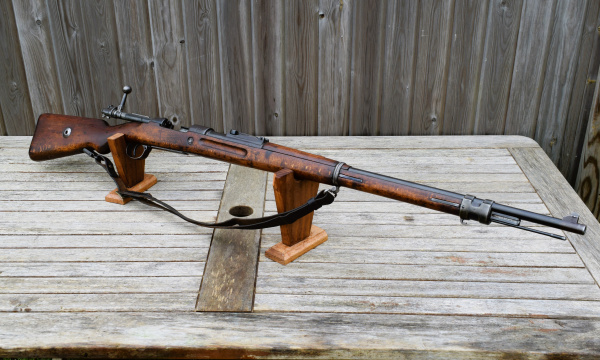Late WW1 or Transitional Gew 98 Rifle…………(F 1163)
Created on November 1st 2024
Fine Example of the late First World War German Gew 98 Rifle
This rifle has seen two guises in its life time. It was originally built in 1917 by the Danzig Aresnal as a standard WW1 Gew98. After the War the terms of the Armistice dictated a certain amount of rifles that the much reduced German Army could retain. As part of the reorganisation and development of the rifle, the original Lange Vizier rear sights were replaced by the more modern Tangent sight which were see on the Kar98b and the later K98. These sights are numbered in the arsenal to match the rifle, as these are. Also, the rear band was replaced with a narrow band as seen on this example. The bolt arm remained staraight and the stock is unaltered. It still retains the original early sling set up with the sprung opening clip at the rear and the stacking hook on the front “H” band.
This example is in very very good condition only showing one small area of post war repair which has been skillfully executed, around the rear band. A composite filler has been used to repair (I suspect) a very irregular patch of damage to the fore-end. I have attempted to remove this kind of repair in the past and as a result I would now recomend leaving it in situe, as it serves its function very well and is really not worth the extreme grief it would incurr to rectify. It is smooth to the touch and blends well in colour and tone to the rest of the stock.
Chambered in 8mm Mauser (7.92 x 57mm) with an internal 5-shot magazine, which can be fed by clip. It has the classic solid Mauser turn-bolt system with staright arm bolt and flag safety to rear. The bolt body and arm match the action serial number “2377 l” but the rear parts of the bolt carrie another number ending in “21”. The outer side wall of the action carries the model designation in Gothic Script “Gew.98.” The serial numbers are clearly stamped into the LHS of the receiver and breech end of the barrel, alongside clear Imperial German Proof marks for the Prussian Arsenal of Danzig. The makers name and date with Imperial Crown are on top of the receiver showing; “Crown /Danzig/1917″ with more markings on the RHS. On the RHS of the rear sight collar is the code for Mauser-Werke AG, Oberndorf along with two smaller waffenamts which where the sight work was carried out.
The rifle itself measures 49″ in overall length. The round blued barrel is 26″ long and the trigger Pull is 13″ to centre. Rear sights graduated from 100 to 2000 meters. Magazine base-plate and tyrigger guard match. There is a silvered round bolt strip-down disc in the butt-stack and a flat blued steel butt-plate with much fine finish remaining. The RHS of the stock shows traces of the Imperial German cartouches but are unreadable. Finger-groved fore-end with good definition around edges. The stock as a whole made of Beech is in very good condition; No splits or shakes and fine surface patina and semi-pistol grip. Pleasing colour and tone all over. Bolt and action mechanically fine. Bore condition is good with a depth of rifling and darkness within the grooves. Edges show some soft wear – to be expected. No obvious significant pitting. Original black leather strap and lower fixing clip included. Cleaning rod of approx’ 15.1/2″ stored in front of end cap. Front “H-Band” is numbered “8030”. Rifle carries modern Nitro-Proofs. Overall, the colour of the metal components has turned from the standard blued finish to a consistant all-over plum brown, The strongest hints of blue remain of the exposed portion of the barrel. The bolt was originally finished in the white.
This represents a good example of a sturdy reliable Infantry rifle which most probably saw service in both World Wars and yet will still offer the shooter of today some enjoyment on the rifle range – some One Hundred and Seven Years after is first emerged from its Prussian Manufactory.
Stock No F 1163 – FAC Required.
£ 1750.
Comments Off on Late WW1 or Transitional Gew 98 Rifle…………(F 1163)
